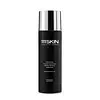What's inside
What's inside
 Key Ingredients
Key Ingredients

 Benefits
Benefits

 Concerns
Concerns

 Ingredients Side-by-side
Ingredients Side-by-side

Water
Skin ConditioningPropanediol
SolventBambusa Vulgaris Water
Skin ConditioningPolyglyceryl-3 Caprate/Caprylate/Succinate
EmollientTranexamic Acid
AstringentPropylene Glycol
HumectantHydroxyacetophenone
AntioxidantHematite Extract
Skin ProtectingAlcohol
AntimicrobialSodium Phytate
Tocopheryl Acetate
AntioxidantGlycyrrhiza Glabra Root Extract
BleachingCitric Acid
BufferingPotassium Sorbate
PreservativeSodium Benzoate
MaskingPhenoxyethanol
PreservativeGlycerin
HumectantSorbic Acid
PreservativeXanthan Gum
EmulsifyingBenzyl Alcohol
PerfumingGlyceryl Caprylate
EmollientDisodium EDTA
Glycine Soja Oil
EmollientSodium Oleate
CleansingBenzoic Acid
MaskingHydrogenated Lecithin
EmulsifyingCopper Tripeptide-1
Skin ConditioningAcetyl Sh-Pentapeptide-35
Skin ConditioningDiamond Powder
AbrasiveParfum
MaskingWater, Propanediol, Bambusa Vulgaris Water, Polyglyceryl-3 Caprate/Caprylate/Succinate, Tranexamic Acid, Propylene Glycol, Hydroxyacetophenone, Hematite Extract, Alcohol, Sodium Phytate, Tocopheryl Acetate, Glycyrrhiza Glabra Root Extract, Citric Acid, Potassium Sorbate, Sodium Benzoate, Phenoxyethanol, Glycerin, Sorbic Acid, Xanthan Gum, Benzyl Alcohol, Glyceryl Caprylate, Disodium EDTA, Glycine Soja Oil, Sodium Oleate, Benzoic Acid, Hydrogenated Lecithin, Copper Tripeptide-1, Acetyl Sh-Pentapeptide-35, Diamond Powder, Parfum
Water
Skin ConditioningPropanediol
SolventDimethicone
EmollientCetearyl Ethylhexanoate
EmollientAlcohol Denat.
AntimicrobialDipropylene Glycol
HumectantAmmonium Polyacryloyldimethyl Taurate
Emulsion StabilisingHydrogenated Lecithin
EmulsifyingAllyl Methacrylates Crosspolymer
Emulsion StabilisingPhenoxyethanol
PreservativeCaprylyl Glycol
EmollientIsopropyl Myristate
EmollientRetinol
Skin ConditioningPolysorbate 20
EmulsifyingSodium Citrate
BufferingBoswellia Serrata Resin Extract
SmoothingDimethiconol
EmollientTrisodium Ethylenediamine Disuccinate
Bisabolol
MaskingCitric Acid
BufferingBHT
AntioxidantPropyl Gallate
AntioxidantWater, Propanediol, Dimethicone, Cetearyl Ethylhexanoate, Alcohol Denat., Dipropylene Glycol, Ammonium Polyacryloyldimethyl Taurate, Hydrogenated Lecithin, Allyl Methacrylates Crosspolymer, Phenoxyethanol, Caprylyl Glycol, Isopropyl Myristate, Retinol, Polysorbate 20, Sodium Citrate, Boswellia Serrata Resin Extract, Dimethiconol, Trisodium Ethylenediamine Disuccinate, Bisabolol, Citric Acid, BHT, Propyl Gallate
 Reviews
Reviews

Ingredients Explained
These ingredients are found in both products.
Ingredients higher up in an ingredient list are typically present in a larger amount.
Citric Acid is an alpha hydroxy acid (AHA) naturally found in citrus fruits like oranges, lemons, and limes.
Like other AHAs, citric acid can exfoliate skin by breaking down the bonds that hold dead skin cells together. This helps reveal smoother and brighter skin underneath.
However, this exfoliating effect only happens at high concentrations (20%) which can be hard to find in cosmetic products.
Due to this, citric acid is usually included in small amounts as a pH adjuster. This helps keep products slightly more acidic and compatible with skin's natural pH.
In skincare formulas, citric acid can:
While it can provide some skin benefits, research shows lactic acid and glycolic acid are generally more effective and less irritating exfoliants.
Most citric acid used in skincare today is made by fermenting sugars (usually from molasses). This synthetic version is identical to the natural citrus form but easier to stabilize and use in formulations.
Read more about some other popular AHA's here:
Learn more about Citric AcidHydrogenated Lecithin is created from the hydrogenation of lecithin (a group of phospholipids). Hydrogenation is a chemical reaction between hydrogen and another element.
This ingredient is an emollient and emulsifier. As an emollient, it helps soften skin by trapping moisture within. As an emulsifier, it prevents oil and water ingredients from separating.
Phenoxyethanol is a preservative that has germicide, antimicrobial, and aromatic properties. Studies show that phenoxyethanol can prevent microbial growth. By itself, it has a scent that is similar to that of a rose.
It's often used in formulations along with Caprylyl Glycol to preserve the shelf life of products.
Propanediol is an all-star ingredient. It softens, hydrates, and smooths the skin.
It’s often used to:
Propanediol is not likely to cause sensitivity and considered safe to use. It is derived from corn or petroleum with a clear color and no scent.
Learn more about PropanediolWater. It's the most common cosmetic ingredient of all. You'll usually see it at the top of ingredient lists, meaning that it makes up the largest part of the product.
So why is it so popular? Water most often acts as a solvent - this means that it helps dissolve other ingredients into the formulation.
You'll also recognize water as that liquid we all need to stay alive. If you see this, drink a glass of water. Stay hydrated!
Learn more about Water